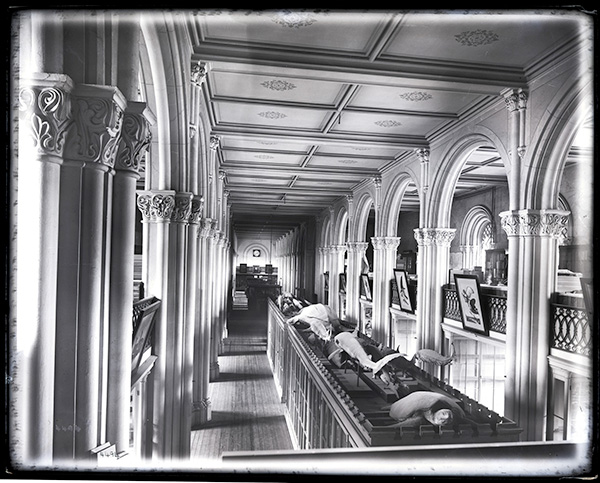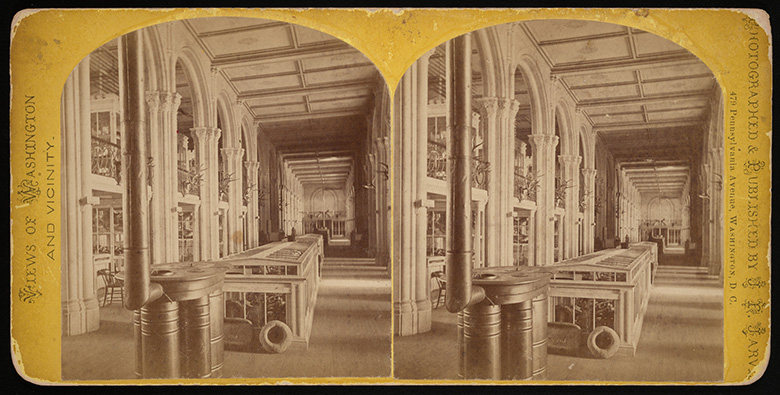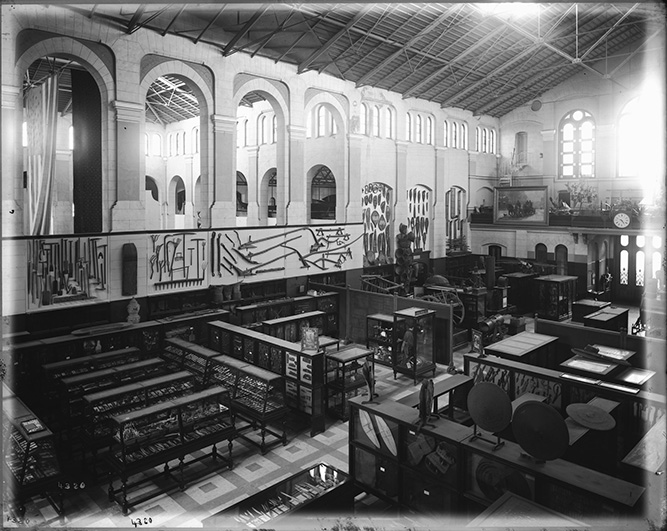Preservation Periodical: Volume 4, Issue 2
Summer 2025
Step Back in Time at the Wagner Free Institute of Science
By Carly Bond
The Smithsonian Institution and AHHP are working on an update to the National Historic Landmark documentation for the Smithsonian Castle. The Castle was designated a National Historic Landmark in 1964 and 1972 for its national significance for science and invention, education, and architecture. These nominations were short documents, and updating the National Historic Landmark documentation provides an opportunity for reevaluation of the Castle’s historic qualitative framework, supplementary analysis or research, and consideration of additional theme studies to provide expanded context.
When undertaking a National Historic Landmark document, a comparative analysis must be completed. The comparative analysis compares the National Historic Landmark with other potentially significant properties to identify the best examples within a specific theme. Other historic properties with scientific missions were evaluated for comparative analysis, which is how AHHP learned about the Wagner Free Institute of Science in Philadelphia, Pennsylvania.
When the Smithsonian was first established, all its operations were housed inside the Castle. The building partially opened in 1849, creating spaces for scientific research, collections, and public engagement to support the Smithsonian’s mission for the increase and diffusion of knowledge. The Castle originally housed a large lecture space for public lectures and educational events. It was first housed in the Castle’s East Wing before being moved to the Upper Great Hall in 1855. The Castle’s display method of overlapping collections and research with public engagement became the model for other early American scientific institutions, including the Wagner Free Institute. Additionally, the Castle’s 1855 lecture hall design served as the model for Wagner’s lecture space.
The Wagner Free Institute of Science Building was constructed between 1859 and 1865, and later remodeled and expanded in 1901. The Institute was created for scientific education and is also a National Historic Landmark. The Wagner is a contemporary of the Castle and the Smithsonian Institution, on different scales, but with a shared mission of public education. The Castle’s original collection displays did not prioritize public engagement; the collections were on display with labels in Latin and lacked educational explanation or context. This model of collection display remained unchanged for the Smithsonian until the creation of the Children’s Room in the Castle’s south tower in 1901.



AHHP is always struck by historic images of early Smithsonian exhibition spaces inside the Castle or the Arts and Industries Building, and how they differ from modern museum exhibits. The Wagner Free Institute is still being used for its original purpose, with display cases and collections as they were originally exhibited in the 1890s. Visiting the Wagner is an opportunity to step back in time and immerse yourself in the historic images above. AHHP had hoped to visit the Wagner Free Institute prior to the publication of this newsletter and write about the experience and will revisit this topic in a future newsletter. AHHP is so excited about this museum, we wanted to still share with newsletter readers now about this special opportunity it provides to people interested in historic buildings and museums, and to experience a 19th-century museum setting.
The Wagner Free Institute is open Tuesday through Friday from 9:30 a.m. to 4:30 p.m., and on some Saturdays. You can learn more about the Wagner here: https://www.wagnerfreeinstitute.org/